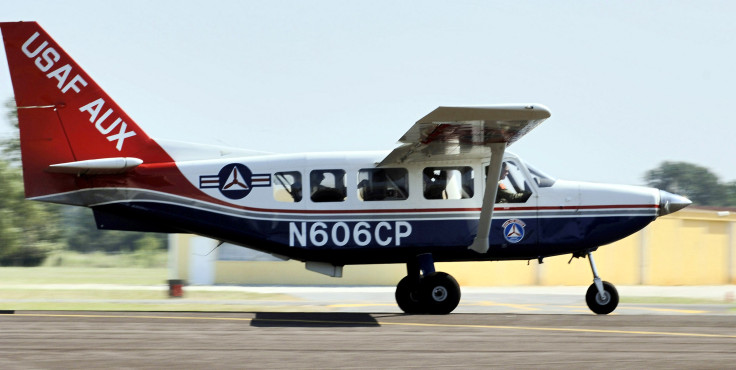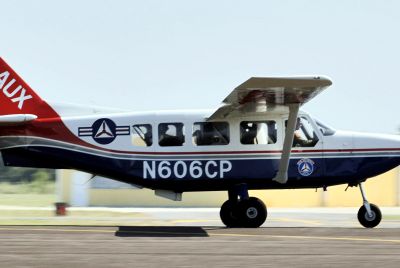Indian Auto Giant Mahindra Officially Closed Its $175 Million Australian Aircraft Business — Here's Why

QUICK FACTS:
The News: Mahindra Aerospace Australia (MAAPL) has been officially liquidated after going into voluntary liquidation in July 2024. The Indian conglomerate received AUD 3.025 million (approximately USD 2 million) from the liquidation process.
The Investment: Mahindra acquired a 75.1% stake in Australian aircraft maker GippsAero and component manufacturer Aerostaff Australia in December 2009 for Rs 175 crore (about $38 million at the time), expecting to tap into the global aviation market.
The End: After shutting down manufacturing in 2020, selling the business back to original owner George Morgan in November 2023, MAAPL has now received its final de-registration certificate, completely exiting the aircraft business.
A 15-Year Journey That Never Took Off
When Mahindra Group, India's automotive giant, entered the Australian aircraft manufacturing business in 2009, it seemed like an ambitious but logical diversification. The company acquired GippsAero (Gippsland Aeronautics) and Aerostaff Australia, planning to manufacture 8- and 10-seater planes for the global market.
But what followed was 15 years of mounting losses, production shutdowns, and ultimately, a complete exit from the business.
What Went Wrong?
The problems were clear early on. In November 2020, Mahindra Deputy Managing Director and Group CFO Anish Shah announced they had "shut down our Gipps Aero business, which was into the manufacturing of 8- and 10-seater planes in Australia."
Shah was blunt about the situation: "For the company, the positive is that the aircraft business is behind us because that had taken a significant amount of cash and the industry even earlier was not in a good shape."
The closure came just over a year after one of the planes manufactured at the Australian facility crashed in Sweden, killing nine people — a tragedy that highlighted the risks and liabilities in the aviation business.
The company had been searching for buyers since 2020, but finding someone willing to take on a struggling aircraft manufacturer proved difficult.
The Fatal Sweden Crash
The decision to shut down came little over a year after one of the planes manufactured at the Australian facility crashed in Sweden, killing nine persons. While details of whether this influenced the closure weren't explicitly stated, the timing was significant.
Aircraft manufacturing carries enormous liability risks, especially after fatal accidents. For a company already struggling with profitability, such incidents can accelerate exit decisions.
The Slow Wind-Down
In August 2020, GippsAero announced it was halting production of the Airvan and restructuring to concentrate on providing support to existing operators of GippsAero aircraft. It was reported that Mahindra Aerospace had put GippsAero up for sale.
The company essentially became a parts and service organization rather than an active manufacturer — a common transition for companies exiting production while managing existing customer obligations.
In November 2023, the final chapter began when MAAPL executed a Share Purchase Agreement with George Morgan for the complete divestment of its stake in several units, including Gipps Aero Pty Ltd, GA8 Airvan Pty Ltd, GA200 Pty Ltd, Nomad TC Pty Ltd, Airvan 10 Pty Ltd, and Airvan Flight Services Pty Ltd.
George Morgan, a director on the board of MAAPL Subsidiaries, purchased the company back from Mahindra. Essentially, the business returned to one of its original owners — someone who understood the company's operations and had long-term relationships in the Australian aviation community.
The Official End
During the fiscal year ending March 31, 2025, MAAPL went into "Members' voluntary liquidation" and came under the control of a liquidator on July 9, 2024.
The liquidation process has now concluded. Upon liquidation of Mahindra Aerospace Australia, MAAPL received AUD 3.025 million.
While this represents a significant loss compared to the initial investment of Rs 175 crore (approximately $38 million in 2009), it at least provides some return and formally closes the chapter.
What Mahindra Kept
Importantly, Mahindra hasn't completely abandoned aerospace. The company continues to operate Mahindra Aerostructures (MASPL), which manufactures aerospace components rather than complete aircraft.
Shah noted that the company will "continue with the aerospace business, which has long-term growth potential," referring to the aero structure business as having "good long-term potential."
Mahindra Aerostructures, based in Bengaluru, produces metallic parts and assemblies for leading global aerospace majors. The facility, inaugurated in 2013, now delivers more than 120,000 parts and assemblies every month to Europe, North America, and Australia.
This business model — supplying components to major manufacturers rather than building complete aircraft — proved far more sustainable than the risky, capital-intensive complete aircraft manufacturing venture.
The Surprising Resurrection
There's an interesting postscript to this story. In November 2023, George Morgan announced he had fully purchased GippsAero back from Mahindra Aerospace and was now the company's sole owner. In June 2025, production recommenced of complete aircraft manufacturing with the GA8 Airvan, making GippsAero the only manufacturer of commercial aircraft in Australia.
New-build Airvans should be operational in 2026.
So while Mahindra couldn't make the business work, the original owner — with deep roots in Australian aviation and presumably different cost structures and expectations — believes he can resurrect production.
On October 26, 2024, George Morgan and Peter Furlong were inducted into the Australian Aviation Hall of Fame for their contributions to aviation in Australia and around the world.
Impact on Mahindra's Bottom Line
When announcing the shutdown in 2020, Mahindra & Mahindra reported an 88% drop in profit after tax to Rs 162 crore for the quarter, largely due to impairment provisions.
However, revenues increased to Rs 11,590 crore in the September 2020 quarter against Rs 10,935 crore the previous year, showing the core automotive business remained healthy despite the aerospace troubles.
The liquidation and final exit removes ongoing liabilities and allows Mahindra to focus on its core strengths — automotive manufacturing, tractors, and component aerospace manufacturing where it has found success.
What's Next for Mahindra
With the aircraft manufacturing business behind it, Mahindra can concentrate on areas where it's thriving:
- Automotive: Mahindra's SUV business in Australia is actually growing, with successful launches of models like the Scorpio
- Aerospace components: The Bengaluru facility continues producing parts for global aerospace giants
- Core markets: Focus returns to tractors and automotive manufacturing where Mahindra has established market leadership
The company's willingness to exit an unsuccessful venture, rather than stubbornly persisting, demonstrates business maturity. Not every diversification works, and knowing when to cut losses is as important as knowing when to invest.
The Bottom Line
Mahindra's Australian aircraft manufacturing venture represents a rare misstep for the generally successful Indian conglomerate. From the 2009 acquisition through the 2020 shutdown, 2023 sale, and now 2024-2025 liquidation, the company has finally closed this chapter.
The AUD 3.025 million received in liquidation is a modest recovery on a multi-million dollar investment, but it provides closure and removes ongoing obligations.
For George Morgan and GippsAero, there's a chance at resurrection under original ownership. For Mahindra, there's a lesson learned and capital freed for better opportunities in its core businesses.
Sometimes the best business decision is knowing when to walk away.
© Copyright 2025 IBTimes AU. All rights reserved.




















